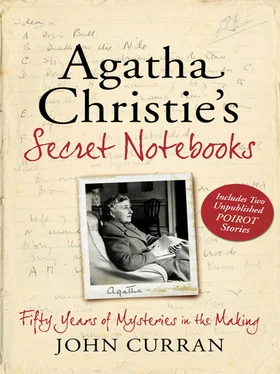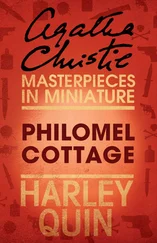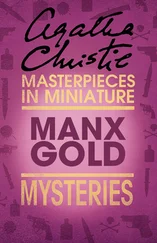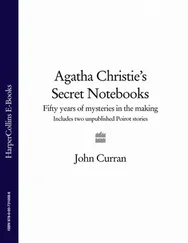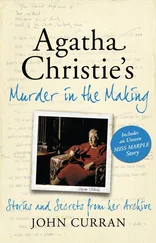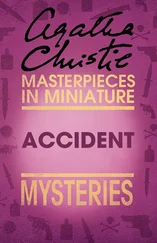While the setting of this novel is typical Christie and Marple, our expectations are confounded in the denouement when an even more breathtaking conspiracy than that of Murder on the Orient Express is revealed. The notes for this novel are evenly divided between three Notebooks. Notebook 27 has two dated pages, ‘October 30th’ and ‘November 17th’ (1964), and the first page of Notebook 36 is dated ‘October ‘64’. Notebook 23 would seem to pre-date the notes in the other two, as the following extract shows:
Bertram’s Hotel
Description of it—Mayfair St. etc.—Edwardian comfort—fires—porters…Tea and muffins—‘Only get muffins at Bertrams’. Points about hotel—a nucleus of ‘landed gentry’—old style Miss Marple points out later—‘pockets’ left over really no-one like that left—No, ‘Bertrams’ hotel belongs to two Americans—(never seen!). They cash in by deliberately recreating the nucleus (at low prices) to give the right atmosphere—then Americans and Australians etc. come at large prices.
Meg Gresham [Bess Sedgwick]—her career—well born? rich? Ran away with Irish groom. Then married Parker Whitworth—enormous man—then Duke of Nottingham—then Count Stanislaus Vronsky—Dirk Chester—film star—or Op. singer
Amalgamate this with frog-faced old major Ronnie Anstruther and Miss Marple—staying a week in London. His talk about murder—same chap—saw him again—different name—same kind of death—medical fellers seemed satisfied—quite all right—only different name again—Looks at someone coming
The general set-up is the same as the novel but the mention of the ‘frog-faced Major’ (possibly a forerunner of Colonel Luscombe, the guardian of Bess’s daughter, Elvira, although without the unflattering description) and his talk about an earlier murder had appeared in 1964 in A Caribbean Mystery, so these notes were probably written prior to that. Or it may be Christie’s general description of retired Army men! Despite this, much of the plot is accurately sketched; but it is sketched at least three times in the course of the notes, each adding little or nothing to the earlier, possibly an indication that her powers of weaving variations were waning.
Ideas
Bertram’s is a HQ—of a crime organization—mainly bank robberies? Train robberies? No real violence—Money is taken in respectable luggage to Bertram’s. Certain people take it there—rehearsed beforehand—they are usually actors—character actors and they double for certain people—Canon Penneyfather, General Lynde, Fergus Mainwaring—country girl—Mr and Mrs Hamilton Clayton?—Contessa Vivary—Ralph Winston
Resume of story
Bess Sedgwick—an outlaw rich loves dangerously—Resistance—racing car falls for foreign criminal—handsome—attractive Stan Lasky. She combines with him and they plan robberies on a colossal scale—this has now been going on for (5 years?) (longer?) HQ is Bertram’s Hotel which changes hands—has a lot of money spent on it and people of the gang are infiltrated into it. Henry is its controlling brain and Bess is his partner—the Americans are its titular owner—but really a façade for Henry—there is a shuttle service—jewels or bank notes pass through Bertram’s in the hands of old fashioned ‘clients’, elderly ladies—clerics—lawyers—Admirals and Colonels—pass out next day—with rich American to Continent
While there is very little in any of the Notebooks about the murder of Michael Gorman, the commissionaire at Bertram’s and an important figure from Bess Sedgwick’s past, our old friend the chambermaid gets yet another outing. Although the setting of a hotel would seem to be perfect for this idea, however, a satisfactory solution eluded her—again:
Circumstances of murder?
Meg—breakfast tray by bed—Kidneys, mushrooms, bacon, tea—chambermaid—evidence—as to conversation between Meg and husband (Chester? Stanislaus?) Anything the matter? She is opening letters. ‘No, nothing’—This evidence clears husband—also chambermaid collects tray—not waiter—
Bertrams Points
Murder—woman in bed—chambermaid’s evidence—took her breakfast in bed—quite all right then (9 a.m.) body not found until 12—really killed—at 8.30. Man (in evening dress) as waiter takes in breakfast tray—strangles her—knifes her—shot? Then goes down and out. In it are chambermaid and Richards
Hallowe’en Party
10 November 1969
A bobbing-for-apples game goes horribly wrong at Lucilla Drake’s teenage party. One of the guests, Mrs Oliver, approaches her friend Hercule Poirot who subsequently visits Woodleigh Common and, in the course of his investigation, uncovers a long-forgotten crime as well as the killer at the Hallowe’en party.
The notes for Hallowe’en Party provide the clearest example in the whole of the Notebooks of a definite starting and finishing date for a title. The first page of Notebook 16, with the notes for Hallowe’en Party, is headed ‘Jan. 1st 1969’ and 45 pages later we read:
July 7th Halloween Party completed
Chapter 1 to 21 inc. ending p. 280 to be sent or taken to H[ughes] M[assie]. 3 or 4 chapters to go to Mrs Jolly [her typist] on Dictaphone rolls 1 to 9. Continue corrections and revisions in them commencing P. 281 and send on to H. M.
At this time Agatha Christie was 78 and although six months for a full-length novel is not unreasonable, it is a long way from the 1930s and 1940s when she finished two or three novels a year. It is entirely possible that the idea for this novel was hatched during a visit to America in late 1966, where Hallowe’en was a bigger holiday, when she accompanied Sir Max Mallowan on a lecture tour. She toyed with the idea of an eleven-plus, rather than a Hallowe’en, party for young teenagers. But the basic plot device was set from the beginning. Yet again Mrs Oliver appears, as she does in four of the final dozen titles that Christie wrote. Also making a reappearance is the policeman Spence from Mrs McGinty’s Dead and Taken at the Flood; and he was to appear again three years later in Elephants Can Remember.
Themes, ideas and plots from earlier titles abound. There are strong echoes throughout of Dead Man’s Folly. In both we have a child murdered during a game, witnesses to an earlier murder presenting a danger to a hitherto safe killer and the creation of a thing of beauty as a grave—a folly in one novel and a garden in the other. As we shall see, a short story from 35 years earlier, ‘How Does Your Garden Grow?’ was also in her mind. Dead Man’s Folly, Mrs McGinty’s Dead and The Labours of Hercules are specifically mentioned in Chapter 4, 5 and 11 respectively; the inspiration for Butter in a Lordly Dish is referred to in Chapter 11, Miss Bulstrode from Cat among the Pigeons is recalled in Chapter 10 and a brief allusion towards the end of Chapter 16 may have provided the basis for Nemesis, two years later. Mrs Drake’s looking over the staircase (Chapter 10) has distinct similarities to Marina Gregg’s in The Mirror Crack‘d from Side to Side. And the opening line of Chapter 17 is almost identical to that in ‘The Case of the Perfect Maid’.
Like many of the late titles, both the notes for Hallowe’en Party and the book itself are diffuse and unfocussed. There are some new ideas as well as those from earlier titles but there are also too many meandering conversations. The uneasy mix does not coalesce into a coherent and ingenious detective novel. Compare the set-up with similar titles from earlier decades— Dumb Witness, Taken at the Flood and Mrs McGinty’s Dead —where Poirot arrives in a small town to investigate a suspicious death and we can appreciate the deterioration in the quality of the titles from Endless Night onwards. Apart from Passenger to Frankfurt all of the titles after 1967 are journeys into the past, each one weaker than the previous. But they are all predicated on a compelling basic idea.
Читать дальше
Конец ознакомительного отрывка
Купить книгу
